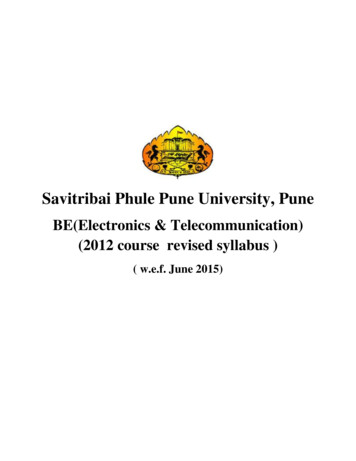
Transcription
Savitribai Phule Pune University, PuneBE(Electronics & Telecommunication)(2012 course revised syllabus )( w.e.f. June 2015)
BE (E & TC) Structure2012 Course w.e.f. June 2015Semester-ITeaching SchemeSubjectCodeSubjectLECTTUTPRExamination SchemeIn SemesterAssessmentPhase IPRORTWMarksEnd SemesterExaminationPhase IITotal404181VLSI Design & Technology33070100404182Computer Networks33070100404183Microwave Engineering43070100404184Elective I33070100404185Elective II33070100404186Lab Practice I (CN & MWE)4404187Lab Practice II (VLSI&Elective I)4404188Project Phase ITotalElective I1.2.3.4.Digital Image ProcessingEmbedded Systems & RTOSSoftware Defined RadioIndustrial Drives and ve II1.2.3.4.Multi rate & Adaptive Signal ProcessingElectronic Product DesignPLCs and AutomationArtificial Intelligence750
Semester-IITeaching SchemeSubjectCodeSubjectLECTTUTPRExamination SchemeIn SemesterAssessmentPhase IPRORTWMarksEnd SemesterExaminationPhase IITotal404189Mobile Communication43070100404190Broadband CommunicationSystems43070100404191Elective III33070100404192Elective IV33070100404193Lab Practice III(MC & BCS)4404194Lab Practice IV(Elective III)2404195Project Phase IITotalElective III1. Speech & Audio Signal Processing2. RF Circuit Design3. Audio Video Engineering4. Soft 750Elective IV1. Biomedical Signal Processing2. Nano Electronics & MEMS3. Detection & Estimation Theory4. Wireless Networks5. Open Elective**Any one subject from the list of Elective IV of computer/IT/Electrical/Instrumentation or Institute can offer elective IV based on anyindustry need with prior approval from BoS(Electronics). Repetition of subjects or topics is to be avoided.Dr. D. S. BormaneChairman, BOS(Electronics)
VLSI Design & Technology(404181)Teaching Scheme:Lectures: 3 Hrs/ WeekExamination Scheme:In Semester Assessment:Phase I : 30End Semester Examination:Phase II: 70Course Objectives: To study HDL based design approach.To learn digital CMOS logic design.To nurture students with CMOS analog circuit designs.To realize importance of testability in logic circuit design.To overview SoC issues and understand PLD architectures with advanced features.Course Outcomes:Aftersuccessfully completing the course, students will be able to Model digital circuit with HDL, simulate, synthesis and prototype in PLDs. Understand chip level issues and need of testability. Design analog & digital CMOS circuits for specified applications.Unit I: VHDL Modeling7LData objects, Data types, Entity, Architecture & types of modeling, Sequential statements,Concurrent statements, Packages, Sub programs, Attributes, VHDL Test bench, Test benches usingtext files. VHDL modeling of Combinational, Sequential logics & FSM, Meta-stability.Unit II: PLD Architectures7LPROM, PLA, PAL: Architectures and applications. Software Design Flow. CPLD Architecture,Features, Specifications, Applications. FPGA Architecture, Features, Specifications, Applications.Unit III: SoC& Interconnect6LClock skew, Clock distribution techniques, clock jitter. Supply and ground bounce, power distributiontechniques. Power optimization. Interconnect routing techniques; wire parasitic, Signal integrity issues.I/O architecture, pad design. Architectures for low power.Unit IV: Digital CMOS Circuits7LMOS Capacitor, MOS Transistor theory, C-V characteristics, Non ideal I-V effects, Technology
Scaling. CMOS inverters, DC transfer characteristics, Power components, Power delay product.Transmission gate. CMOS combo logic design. Delays: RC delay model, Effective resistance, Gateand diffusion capacitance, Equivalent RC circuits; Linear delay model, Logical effort, Parasiticdelay, Delay in a logic gate, Path logical efforts.Unit V: Analog CMOS Design7LCurrent sink and source, Current mirror. Active load, Current source and Push-pull inverters.Common source, Common drain, Common gate amplifiers. Cascode amplifier, Differentialamplifier, Operational amplifier.Unit VI: Testability6LTypes of fault, Need of Design for Testability (DFT), Testability, Fault models, Path sensitizing,Sequential circuit test, BIST, Test pattern generation, JTAG & Boundary scan, TAP Controller.Text Books1. Charles H. Roth, “Digital systems design using VHDL”, PWS.2. Wyane Wolf, “Modern VLSI Design (System on Chip)”, PHI Publication.Reference Books1. Allen Holberg, “Analog CMOS Design”, Oxford University Press.2. Neil H. E. Weste, David Money Harris, “CMOS VLSI Design: A Circuit & SystemPerspective”, Pearson Publication
Computer Networks(404182)Teaching Scheme:Lectures:3 Hrs/ WeekExamination Scheme:In Semester Assessment:Phase I : 30End Semester Examination:Phase II: 70Course Objectives: Understand state-of-the-art in network protocols, architectures, and applicationsTo provide students with a theoretical and practical base in computer networks issuesDefine the basic terminology of computer networksRecognize the individual components of the big picture of computer networksOutline the basic network configurationsList the layers of the TCP/IP and OSI model and describe the duties of each layerUnderstand the transmission methods underlying LAN and WAN technologies.Course Outcomes:After successfully completing the course students will be able to Understand fundamental underlying principles of computer networking Describe and analyze the hardware, software, components of a network and theinterrelations. Analyze the requirements for a given organizational structure and select the most appropriatenetworking architecture and technologies; Have a basic knowledge of the use of cryptography and network security; Have a basic knowledge of installing and configuring networking applications. Specify and identify deficiencies in existing protocols, and then go onto select new and betterprotocols.Unit I: Physical Layer6LData Communications, Networks, Network types, Protocol layering, OSI model, Layers in OSImodel, TCP / IP protocol suite, Addressing, Guided and Unguided Transmission media.Switching: Circuit switched networks, Packet Switching, Structure of a switch.Unit II: Data Link Layer6L
Introduction to Data link Layer, DLC Services, DLL protocols, HDLC, PPP, Media AccessControl: Random Access, Controlled Access, Channelization. Wired LAN:Ethernet Protocol,Standard Ethernet, Fast Ethernet, Giagabit Ethernet, 10 Gigabit Ethernet.Unit III:Wireless LANS & Virtual Circuit Networks6LIntroduction, Wireless LANS: IEEE 802.11 project, Bluetooth, Zigbee, Connecting devices andVirtual LANS: Connecting devices, Virtual LANS.Unit IV:Network Layer6LNetwork Layer Services, Packet Switching, Network layer performance, IPv4, addresses,Forwarding of IP packets, Network layer protocols: IP, ICMPv4, Mobile IP, Unicast Routing:Introduction, Routing Algorithms, Unicast Routing protocols, Multicast Routing Introduction,Next Generation IP:IPv6 Addressing, The IPv6 protocol, ICMPv6, Transition from IPv4 to IPv6.Unit V:Transport Layer 6LIntroduction, Transport layer protocols and services, Port numbers User Datagram Protocol(UDP), Transmission Control protocol (TCP), SCTP, Quality of services: Dataflowcharacteristics, Flow Control.Unit VI:Application Layer 6LIntroduction, World Wide Web and HTTP, FTP, Electronic mail, Telnet, Name System (DNS),Cryptography and Network Security: Introduction, Symmetric key ciphers and Asymmetric keyCiphers, Introduction to network security.Text Books1. Behrouz A. Foruzan, “Data communication and Networking”, Tata McGraw-Hill,5thEdition2. James F. Kurouse& W. Rouse, “Computer Networking: A Top down Approach”, 6thEdition, Pearson Education.Reference Books1. Andrew S. Tannenbaum, “Computer Networks”, Pearson Education, Fourth Edition,20032. Wayne Tomasi, “Introduction to Data Communication and Networking”, 1/e, PearsonEducation3. Greg Tomsho, Ed Tittel, David Johnson. “Guide to Networking Essentials”, fifth edition,Thomson India Learning, 2007.
Microwave Engineering(404183)Teaching Scheme:Lectures: 4 Hrs/ WeekExamination Scheme:In Semester Assessment:Phase I : 30End Semester Examination:Phase II: 70Course Objectives: To lay the foundation for microwave engineeringTo understand the applications of microwave engineeringCarryout the microwave network analysis.Course Outcomes:Aftersuccessfully completing the course students will be able to Formulate the wave equation in wave guide for analysis. Identify the use of microwave components and devices in microwave applications. Understand the working principles of all the microwave tubes Understand the working principles of all the solid state devices Choose a suitable microwave tube and solid state device for a particular application Carry out the microwave network analysis Choose a suitable microwave measurement instruments and carry out the requiredmeasurements.Unit I : Transmission Lines and Waveguides8LIntroduction to Microwaves engineering: History of Microwaves, Microwave Frequency bands.Applications of Microwave.General solution for TEM, TE and TM waves,Parallel plate waveguide, and rectangularwaveguide. Wave guide parameters. Introduction tocoaxial line, Rectangular waveguide cavityresonators, Circular waveguide cavity resonatorsUnit II : Microwave Components8LMulti port junctions: Construction and operation of E-plane, H-plane, Magic Tee andDirectional couplers.Ferrites components: - Ferrite Composition and characteristics, Faraday rotation, Constructionand operation of Gyrator, Isolator and Circulator.Striplines: Structural details and applications of Striplines, Microstrip line, Parallel Strip line,Coplanar Strip line, Shielded Strip Line.
Unit III : Microwave Network Analysis6LIntroduction and applications of Impedance and Equivalent voltages and currents, Impedanceand Admittance matrices, The Transmission (ABCD) matrixScattering Matrix:-Significance, formulation and properties. S-Matrix calculations for-2 portnetwork junction, E plane, H-plane and E-H (Magic Tee) Tees, Directional coupler, Isolator andCirculator. Related problems.Unit IV : Microwave Tubes8LLimitations of conventional tubes, O and M type classification of microwave tubes, reentrantcavity, velocity modulation.O type tubesTwo cavity Klystron: Construction and principle of operation, velocity modulation andbunching process Applegate diagram.Reflex Klystron: Construction and principle of operation, velocity modulation and bunchingprocess, Applegate diagram, Oscillating modes, o/p characteristics, efficiency, electronic &mechanical tuning.M-type tubesMagnetron: Construction and Principle of operation of 8 cavity cylindrical travelling wavemagnetron, hull cutoff condition, modes of resonance, PI mode operation, o/p characteristics,Applications.Slow wave devicesAdvantages of slow wave devices, Helix TWT: Construction and principle of operation,Applications.Unit V :Microwave Solid State Devices8LMicrowave bipolar transistor, FET, MESFET, Varactor Diode, PIN Diode, Shottky BarrierDiode, Tunnel Diode, TEDs, Gunn Diodes, IMPATT diode and TRAPATT diode. Structuraldetails, Principle of operation, various modes, specifications, and applications of all thesedevices.Unit VI : Microwave Measurements6LMeasurement devices: Slotted line, Tunable detector, VSWR meter, Power Meter, S-parametermeasurement, frequency measurements, Power measurement, Attenuation measurement, Phaseshift measurement, VSWR measurement, Impedance measurement, Q of cavity resonatormeasurement
Text Books1. Samuel Y. Liao, “Microwave Devices and Circuits”, 3rd edition, Pearson2. David M. Pozar, “Microwave Engineering", Fourth edition, Wiley.Reference Books1. M. Kulkarni, “Microwave and Radar engineering”, 3rd edition, Umesh Publications2. ML Sisodia& GS Raghuvamshi, “Microwave Circuits and Passive Devices”Wiley, 19873. M L Sisodia& G S Raghuvanshi, “Basic Microwave Techniques and LaboratoryManual”, New Age International (P) Limited, Publishers.
Digital Image Processing(404184)Teaching Scheme:Lectures:3 Hrs/ WeekExamination Scheme:In Semester Assessment:Phase I : 30End Semester Examination:Phase II: 70Course Objectives: To learn the fundamental concepts of Digital Image Processing.To study basic image processing operations.To understand image analysis algorithms.To expose students to current applications in the field of digital image processing.Course Outcomes:After successfully completing the course students will be able to Develop and implement algorithms for digital image processing. Apply image processing algorithms for practical object recognition applications.Unit I : Fundamentals of Image Processing6LSteps in image processing, Human visual system, Sampling & quantization, Representing digitalimages, Spatial & gray-level resolution, Image file formats, Basic relationships between pixels,Distance Measures. Basic operations on images-image addition, subtraction, logical operations,scaling, translation, rotation. Image Histogram. Color fundamentals & models – RGB, HSI YIQ.Unit II: Image Enhancement and Restoration6LSpatial domain enhancement: Point operations-Log transformation, Power-law transformation,Piecewise linear transformations, Histogram equalization. Filtering operations- Imagesmoothing, Image sharpening.Frequency domain enhancement: 2D DFT, Smoothing and Sharpening in frequencydomain.Homomorphic filtering.Restoration: Noise models, Restoration using Inverse filtering and Wiener filteringUnit III: Image Compression6LTypes of redundancy, Fidelity criteria, Lossless compression – Runlength coding, Huffmancoding, Bit-plane coding, Arithmetic coding. Introduction to DCT, Wavelet transform. Lossycompression – DCT based compression, Wavelet based compression. Image and VideoCompression Standards – JPEG, MPEG.
Unit IV: Image Segmentation and Morphological Operations6LImage Segmentation: Point Detections, Line detection, Edge Detection-First order derivative –Prewitt and Sobel. Second order derivative – LoG, DoG, Canny. Edge linking, HoughTransform, Thresholding – Global, Adaptive. Otsu’s Method. Region Growing, Region Splittingand Merging. Morphological Operations: Dilation, Erosion, Opening, Closing, Hit-or-Misstransform, Boundary Detection, Thinning, Thickening, Skeleton.Unit V: Representation and Description6LRepresentation – Chain codes, Polygonal approximation, Signatures. Boundary Descriptors –Shape numbers, Fourier Descriptors, Statistical moments. Regional Descriptors – Topological,Texture. Principal Components for Description.Unit VI: Object Recognition and Applications6LFeature extraction, Patterns and Pattern Classes, Representation of Pattern classes, Types ofclassification algorithms, Minimum distance classifier, Correlation based classifier, Bayesclassifier. Applications: Biometric Authentication, Character Recognition, Content based ImageRetrieval, Remote Sensing, Medical application of Image processingText Books1. Rafael C. Gonzalez and Richard E. Woods, “Digital Image Processing”, Third Edition, Pearson Education2. S Sridhar, “Digital Image Processing”, Oxford University Press.Reference Books1. Rafael C. Gonzalez, Richard E. Woods, and Steven L. Eddins, “Digital Image ProcessingUsing MATLAB”, Second Edition, - Tata McGraw Hill Publication2. S Jayaraman, S Esakkirajan, T Veerakumar, “Digital Image Processing”, Tata McGrawHill PublicationList of Experiments:Note: Experiments are to be performed using software preferably open source.1. To perform basic operations on images.2. To perform conversion between color spaces.3. To perform histogram equalization.4. To perform image filtering in spatial domain.5. To perform image filtering in frequency domain.6. To perform image restoration.7. To perform image compression using DCT / Wavelet transform.8. To perform edge detection using various masks.9. To perform global and adaptive thresholding.10. To apply morphological operators on an image.11. To obtain boundary / regional descriptors of an image.12. To perform image classification / recognition
Embedded Systems & RTOS(404184)Teaching Scheme:Lectures: 3 Hrs/ WeekExamination Scheme:In Semester Assessment:Phase I : 30End SemesterExamination:Phase II: 70Course Objectives: To understand the Embedded system design issues.To learn real time operating system concepts.To understand the Embedded Linux environmentTo learn Embedded software development and testing process.Course Outcomes:Aftersuccessfully completing the course students will be able to Get insight of design metrics of Embedded systems to design real time applications tomatch recent trends in technology. Understand Real time systems concepts. Understand Linux operating system and device drivers. Get to know the hardware – software co design issues and testing methodology forEmbedded system.Unit I:Introduction to Embedded Systems6LIntroduction to Embedded Systems, Architecture, Classification and Characteristics ofEmbedded System, Design Process, Design Metrics and optimization of various parameters ofembedded system. Embedded processor technology, IC technology, Design technology.Software development life cycle. Various models like waterfall, spiral, V , Rapid Prototypingmodels and ComparisonUnit II: Real Time Systems Concepts6LForeground/ Background systems, Critical section of code, Resource, Shared resource,multitasking, Task, Context switch, Kernel, Scheduler, Non-Preemptive Kernel , PreemptiveKernel, Reentrancy, Round robin scheduling, Task Priorities, Static & Dynamic Priority, PriorityInversion, Assigning task priorities, Mutual Exclusion, Deadlock, Clock Tick, Memoryrequirements, Advantages & disadvantages of real time kernels.
Unit III: µCOS II6LFeatures of µCOS II. Kernel structure. µCOS II RTOS services:Task management, Timemanagement, Intertask Communication and Synchronization.Unit IV: Embedded Linux Development Environment6LNeed of Linux, Embedded Linux Today, Open Source and the GPL, BIOS Versus Boot loader,Anatomy of an Embedded System, Storage Considerations, Embedded Linux Distributions.Embedded Development Environment, Cross-Development Environment, Host SystemRequirements, Hosting Target Boards. Development Tools, GNU Debugger, Tracing andProfiling Tools, Binary Utilities.Unit V: Linux Kernel Construction6LLinux Kernel Background, Linux Kernel Construction, Kernel Build System, KernelConfiguration. Role of a Bootloader, Bootloader Challenges. A Universal Bootloader: Das UBoot. Porting U-Boot. Device Driver Concepts, Module Utilities, Driver Methods. Linux FileSystem & ConceptsUnit VI : Embedded Software Development, Testing Process and Tools6LEmbedded Software development process and tools, Host and Target Machines, linking andLocating Software, Getting Embedded Software into the Target System, Issues in HarwareSoftware Design and Co-design. Testing on Host Machine, Simulators, Laboratory Tools. Casestudy of Embedded system like Automatic Chocolate Vending Machine, Mobile Phone.Text Books1. Jean J.Labrosse, “MicroC OS II, The Real-Time Kernel”, 2nd edition, CMP Books.2. Christopher Hallinan, “Embedded Linux Primer -A Practical, Real-World Approach ”2ndedition, Prentice Hall.Reference Books1. Raj Kamal, “Embedded Systems – Architecture, Programming and Design" 2nd edition,McGraw Hill.2. Frank Vahid and Tony Givargis, “ Embedded System Design – A Unified hardware/Software introduction ” 3rd edition, Wiley.List of Experiments:Group A: ARM7/ ARM Cortex- M3&µCOS - II Based Experiments (any four)1. Multitasking in µCOS II RTOS using minimum 3 tasks on ARM7/ ARM Cortex- M3.
2. Semaphore as signaling & Synchronizing on ARM7/ ARM Cortex- M3.3. Mailbox implementation for message passing on ARM7/ ARM Cortex- M3.4. Queue implementation for message passing on ARM7/ ARM Cortex- M3.5 Implementation of MUTEXusing minimum 3 tasks on ARM7/ ARM Cortex- M3.Group B: ARM9 & LINUX Based Experiments (any four)6. Download pre-configured Kernel Image, File System, bootloader to target device- ARM9.7. Writing simple application using embedded Linux on ARM9.8. Writing “Hello World” device Driver. Loading into & removing from Kernel on ARM9 board.9. Write a program for I2C based RTC using embedded Linux on ARM9.10. Using Device driver for GPIO, write a program to blink LED onARM9.11. Write a program for External InterruptonARM9.
Software Defined Radio(404184)Teaching Scheme:Lectures: 3 Hrs/ WeekExamination Scheme:In Semester Assessment:Phase I : 30End Semester Examination:Phase II: 70Course Objectives: To understand “Modern Radio Communication System “ that can be reconfiguredTo understand GNU RadioTo understand how SDR platform provides easy access to wireless network systemTo understand how unlike simulation in Communication Projects, SDR allows easyaccess to both PHY and MAC layerTo understand the concept of Cognitive Radio and Spectrum sharingCourse Outcomes:Aftersuccessfully completing the course students will be able to Compare SDR with traditional Hardware Radio HDR Implement modern wireless system based on OFDM, MIMO & Smart Antenna Build experiment with real wireless waveform and applications, accessing both PHY andMAC, Compare SDR versus MATLAB and Hardware Radio Work on open projects and explore their capability to build their own communicationsystem.Unit I : Software Defined Radio fundamentals6LIntroduction to SDR, Need of SDR, Principles of SDR , Basic Principle and difference in Analogradio and SDR , SDR characteristics, required hardware specifications, Software/Hardwareplatform, GNU radio -What is GNU radio, GNU Radio Architecture, Hardware Block of GNU,GNU software , MATLAB in SDR , Radio Frequency Implementation issues, Purpose of RFfront End, Dynamic Range ,RF receiver Front End topologies, Flexibility of RF chain withsoftware radio, Duplexer ,Diplexer ,RF filter ,LNA ,Image reject filters , IF filters , RF MixersLocal Oscillator , AGC, Transmitter Architecture and their issues,Sampling theorem in ADC,Noise and distortion in RF chain, Pre-distortionCase study : AM/FM/BPSK/QPSK/OFDM Simulation in MatlabUnit II : SDR Architecture6LArchitecture of SDR-Open Architecture, Software Communication Architecture, Transmitter
Receiver Homodyne/heterodyne architecture, RF front End, ADC, DAC, DAC/ADC NoiseBudget, ADC and DAC Distortion, Role of FPGA/CPU/GPU in SDR, Applications of FPGA inSDR, Design Principles using FPGA, Trade –offs in using DSP, FPGA and ASIC, PowerManagement Issues in DSP,ASIC,FPGACase Study : JTRS –Goals of SCA ,Architectural details ,SDR forum ArchitectureUnit III : Multi Rate Signal Processing6LSample timing algorithms, Frequency offset estimation and correction, Channel Estimation,Basics of Multi Rate, Multi Rate DSP, Multi Rate Algorithm, DSP techniques in SDR, OFDM inSDRUnit IV : Smart/MIMO Antennas using Software Radio6LSmart Antenna Architecture, Vector Channel Modeling , Benefits of Smart Antenna PhasedAntenna Array Theory, Adaptive Arrays, DOA Arrays, Applying Software Radio Principles toAntenna Systems, Beam forming for systems-Multiple Fixed Beam Antenna Array, FullyAdaptive Array , Relative Benefits and Trade-offs OF Switched Beam and Adaptive Array,Smart Antenna Algorithms , Hardware Implementation of Smart Antennas, MIMO -frequency,time, sample Synchronization, Space time block coding-Space Time Filtering, Space TimeTrellis Coding .Case Study : Principles of MIMO-OFDMUnit V : Cognitive Radio6LCognitive Radio Architecture, Dynamic Access Spectrum, Spectrum Efficiency, SpectrumEfficiency gain in SDR and CR ,Spectrum Usage, SDR as a platform for CR, OFDM as PHYlayer ,OFDM Modulator, OFDM Demodulator, OFDM Bandwidth, Benefits of OFDM in CR,Spectrum Sensing in CR, CR NetworkUnit VI : Applications of SDR6LApplication of SDR in Advance Communication System-Case Study, Challenges and Issues,Implementation, Parameter Estimation –Environment, Location, other factors, Vertical Handoff,Network Interoperability.Case Study : 1)CR for Public Safety –PSCR , Modes of PSCR, Architecture of PSCR2)Beagle board based SDR 3)Embedded PCSR using GNU radioText Books:1. Jeffrey.H.Reed ,Software Radio : A Modern Approach to Radio Engineering , Pearson ,LPE
Reference Books:1. Markus Dillinger , KambizMadani ,Nancy Alonistioti, Software Defined Radio :Architectures , Systems and Functions ,Wiley2. Tony .J. Rouphael , RF and DSP for SDR, Elsevier Newness Press ,20083. Dr.TajStruman ,Evaluation of SDR –Main Document4. SDR –Handbook , 8th Edition , PENTEK5. Bruce a. Fette , Cognitive Radio Technology, Newness, ElsevierList of the Experiments(Minimum 8 experiments are to be performed):1. Introduction to GNU Radio2. Introduction to Software Defined Radio Systems3. Implementation of AM using SDR4. Implementation of FM using SDR with application such as transfer of files5. Implementation of M-PSK transmitter using SDR6. Implementation of M-PSK receiver using SDR7. Implementation of M-QAM transmitter using SDR8. Implementation of M-QAM receiver using SDR9. Implementation of Transmission of files on Wireless media using SDR10. Implementation of OFDM using SDR11. Implementation of Cognitive radio using SDR
Industrial Drives and Control(404184)Teaching Scheme:Lectures: 3 Hrs/ WeekPractical: 2 Hrs/ WeekExamination Scheme:In Semester Assessment:Phase I : 30End Semester Examination:Phase II: 70Course Objectives: Describe the structure of Electric Drive systems and their role in various applicationssuch as flexible production systems, energy conservation, renewable energy,transportation etc., making Electric Drives an enabling technology.Study and understand the operation of electric motor drives controlled from a powerelectronic converter and to introduce the design concepts of controllers for closed loop operation Study DC, AC, special machines like stepper motor, servo motor and brushless motor andtheir control.Course Outcomes: Understand the basic principles of power electronics in drives and its control, types ofdrives and basic requirements placed by mechanical systems on electric drives.Understand the operation of 1ф & 3ф converter drives for separately excited & series DCmotors, dual converter drives, 2 quadrant and 4 quadrant DC chopper drives, Open-loop& closed-loop control of DC drives with transfer function, Dynamic and regenerativebraking. Protection circuits for DC drives.Learn speed control of induction motor drives in an energy efficient manner using powerelectronics. To study and understand the operation of both classical and modern inductionmotor drives.Learn and understand working of cylindrical-rotor motor, salient-pole motor, reluctancemotor, and permanent-magnet motors.Learn closed loop V/f control and load-commutated inverter (LCI) control. Variablereluctance & permanent magnet stepper motors & drives, switched reluctance motors &drives, brushless DC and AC motors & drives.Unit I: DC Drives6LBasic characteristics of DC motors, Operating modes, Motor performance parameters, 1ф & 3фconverter drives for separately excited & series DC motors for continuous & discontinuousoperations. Chopper fed DC drives, Comparison of converter fed drive & chopper fed drive.Open loop & closed loop control of dc drives with transfer function
PLL control, Microprocessor based control of dc drives, Dynamic and regenerative braking ofDC motorsUnit II: Induction Motor Drives & Control6LInduction motor characteristics, Control strategies like stator voltage control, v/f control,rotor resistance control, Variable frequency Square wave VSI Drives, Variable frequency PWMVSI Drives, Variable frequency CSI Drives, Closed loop control of Induction motors, v/fcontrol of three phase IM using PWM inverter, Vector Control (Field oriented Control): Basicprinciple of vector control, Direct vector control & indirect vector control, DQ Transformation,Braking of induction motor, soft acceleration and deceleration, various protections.Unit III: Special Motor Drives I6LCylindrical rotor motor Drive, Salient pole motor Drive, Switched reluctance motor (SRM)drive, Synchronous Reluctance motor drive, self-controlled synchronous motor drivesUnit IV: Special Motor Drives II6LPermanent magnet Brushless DC motor drive, Permanent magnet AC synchronous motor drive,Variable reluctance & permanent magnet stepper motor, Stepper motor drives, Servo motorDrives.Unit V: Drive Applications in Renewable Energy6LPower Electronics for wind power systemsWind power system: System component, Turbine rating, Electrical load matching, fixed speedand variable speed operation, System design features, Maximum power operations and Systemcontrol requirementWECS: Principle of WECS, role of power electronics in WECS, Drive selection criteria for fixedspeed and variable speed WECS, Stand-alone PV systems, Grid connected PV systems.Power Electronics for Photovoltaic Power SystemsBasics of Photovoltaic: The PV cell, Module and array, I-V and P-V curves, PV systemcomponent, Stand-alone PV systems, Grid connected PV systems.Unit VI: Applications of Artificial neural network and fuzzy logic in Drives6LFuzzy logic Principle and applications: Introduction, Fuzzy sets, Fuzzy system, Fuzzy control,Fuzzy logic based induction motor speed control.Neural network principle and applications: Introduction, Neural network in identification andcontrol, AI Applications in electrical machines and drives, Neural network based PWMcontrollerText Books1. Fundamental of Electrical Drives, Gopal K. Dubey, Narosa Publishing House2. Modern Power Electronics and AC Drives, Bimal K. Bose, Pearson
Reference Books1. Wind & Solar Power system, Mukund Patel , CRC Press2. Thyristor DC drives, P. C Sen, John Wiley.3. Power Electronics, Converters, Applications and Design, N. Mohan, T. M. Undeland& W. P.Robbins, John Wiley and Sons, 3rd EditionList of Experiments (Minimum 8 experiments are to be performed):1. DC motor control using semi/full 1-Φ /3-Φ converter. (Open loop and closed loop)2. 4-Quadrant chopper fed reversible DC drive3. Dual converter fed DC Drive (Single phase/ Th
RF Circuit Design 3. Audio Video Engineering 4. Soft Computing 5. Elective IV 1. Biomedical Signal Processing . 2. David M. Pozar, "Microwave Engineering", Fourth edition, Wiley. Reference Books . 3. M L Sisodia& G S Raghuvanshi, "Basic Microwave Techniques and Laboratory Manual", New Age International (P) Limited, Publishers. Digital .
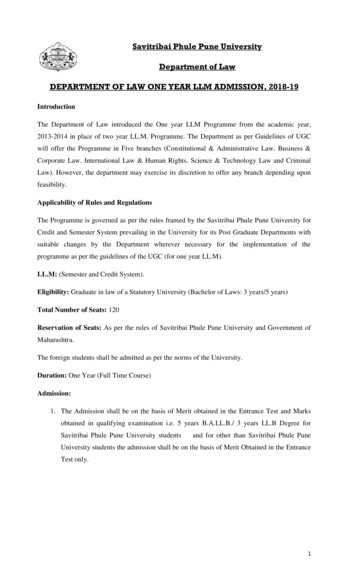
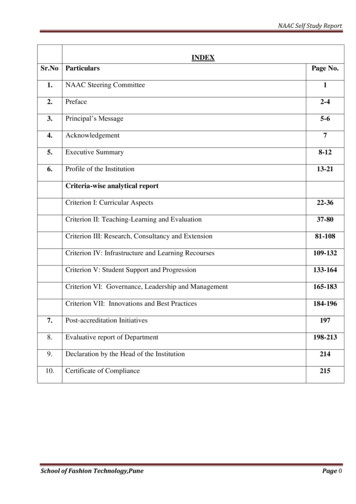
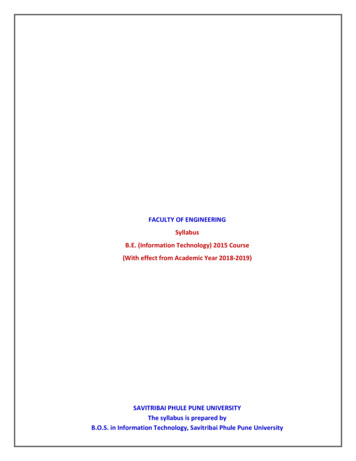
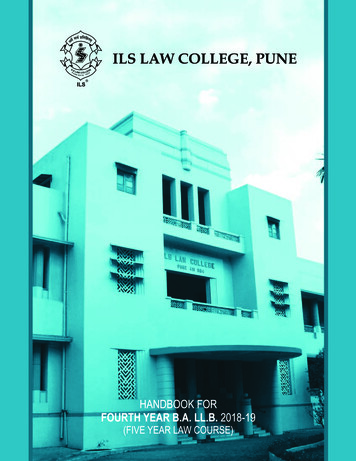
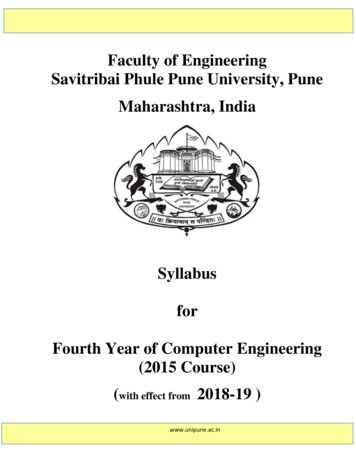
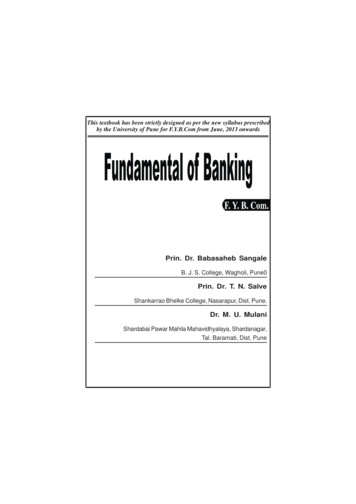

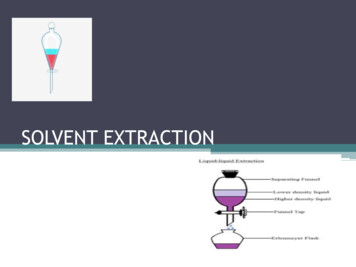
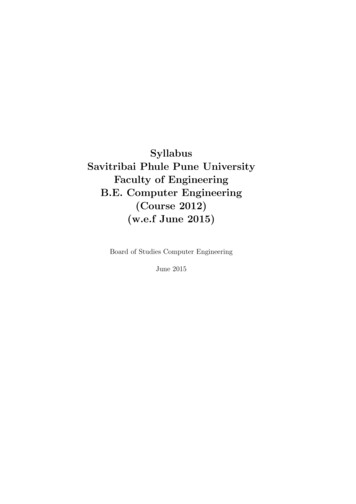
![[ 4758 ] - 526 - Savitribai Phule Pune University](/img/40/te2015.jpg)
